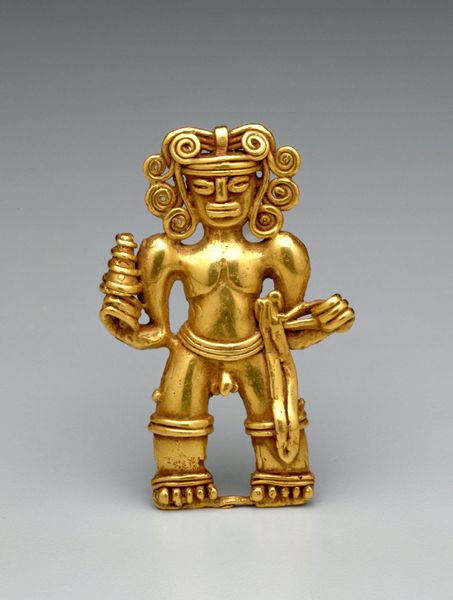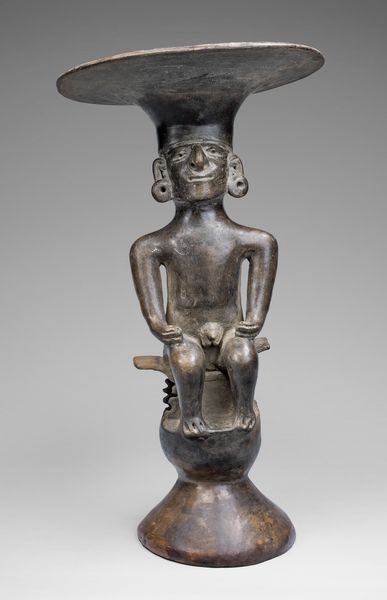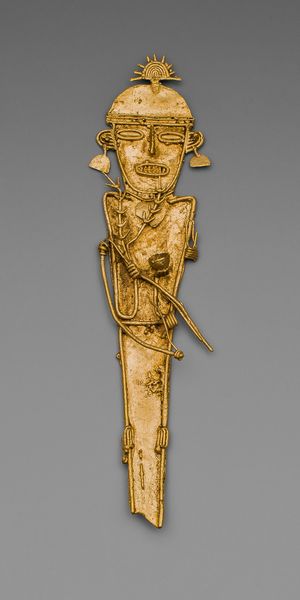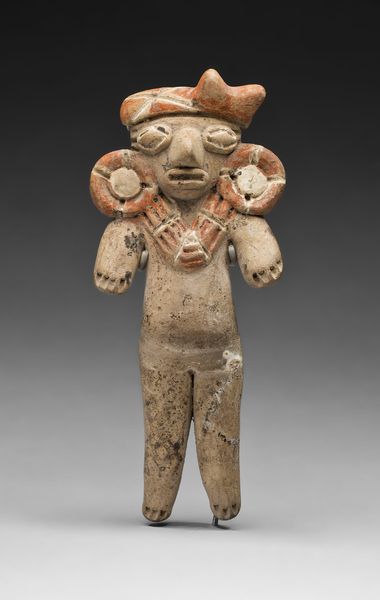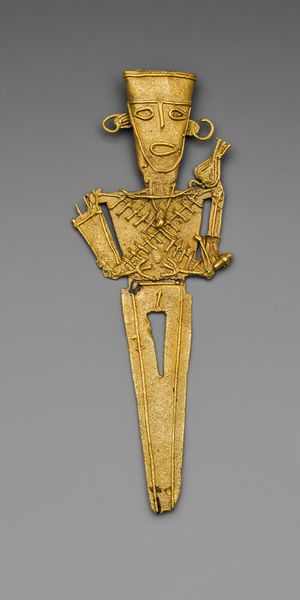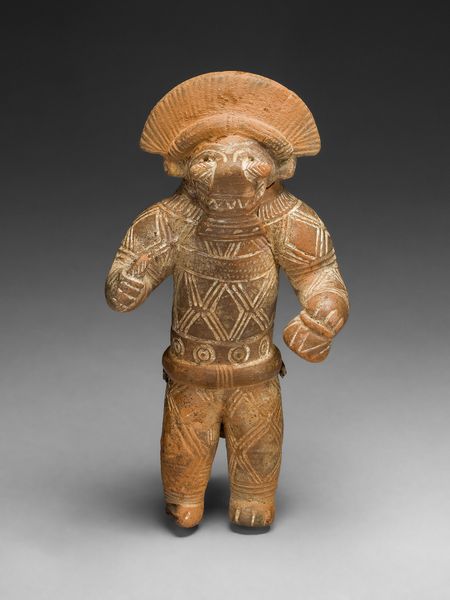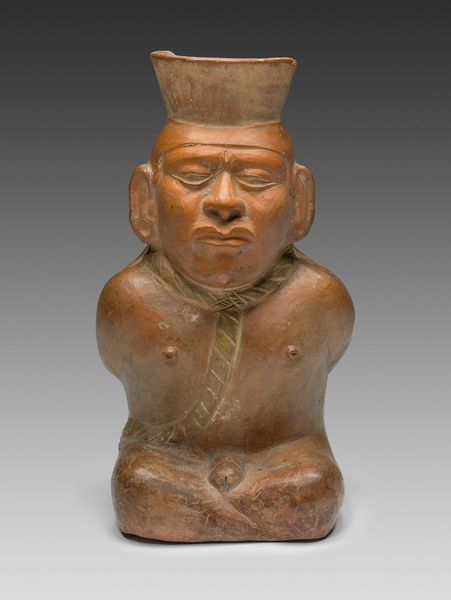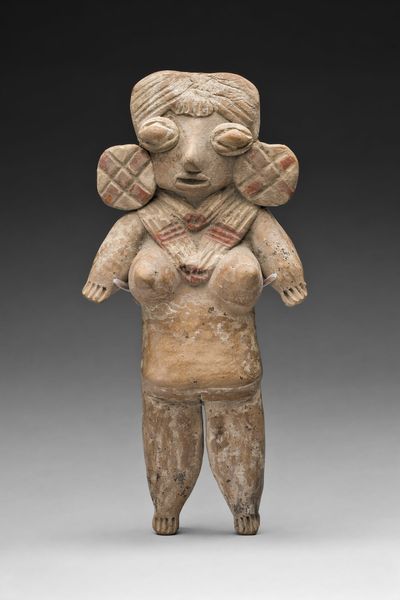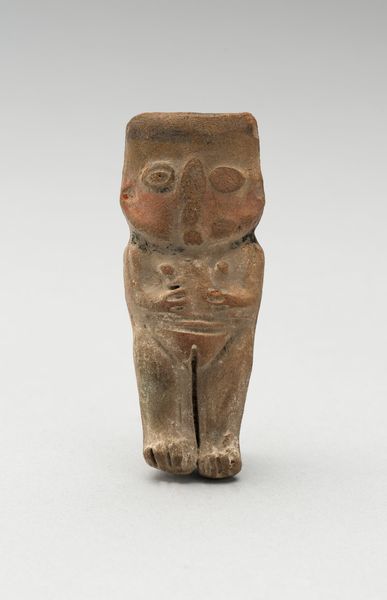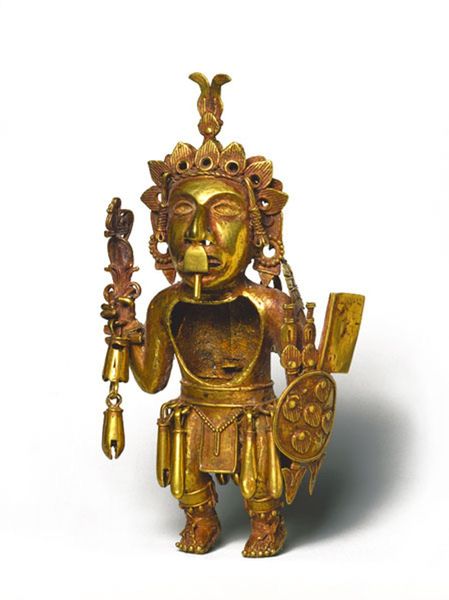
gold, sculpture
#
gold
#
figuration
#
sculpture
#
indigenous-americas
Dimensions: 34 × 12.7 cm (13 3/8 × 5 in.)
Copyright: Public Domain
Curator: It's stunning! The gold practically radiates. The turquoise accents create such a striking contrast. It's powerful, yet also feels meticulously crafted. Editor: Indeed! What we’re observing here is a Ceremonial Knife, also called a “Tumi.” This particular example hails from the Chimú culture, dating back to potentially 1100 to 1470 AD. It is currently part of the collection at The Art Institute of Chicago. It is mostly composed of gold with some ceramic as well. Curator: And considering it's a ceremonial object, likely destined for display within a sacred space or a high-status burial, it's remarkable to consider the hands that formed and burnished each detail. The gold itself… where did it come from? What systems of labor and trade made its acquisition possible? Editor: Those are very pertinent questions. Its existence absolutely hinges on established networks and resource control. Gold represented more than just material wealth; it was deeply intertwined with the Chimú understanding of power and social hierarchy. Consider also that museums today frame this knife. What social implications arise from this placement? Curator: Exactly! Was this crafted by a single artisan or by several individuals each specializing in certain techniques? What was the level of material knowledge required for manipulating gold with such precision? It also makes you question what specific rituals were performed, and did the weight or balance of this tool influence these movements? Editor: Well, seeing as it is indeed a tumi knife, one has to consider its potential employment for purposes such as sacrifice or trepanation—the very presence of it insinuates social structures involving power dynamics of leaders and subjects of religious practice in the art from this period. Curator: These points certainly deepen the way that this functions as an artwork. Thinking of all the craft involved is really quite moving to me. The combination of technical mastery and complex political-economic circumstances that result in an object of such captivating presence! Editor: Ultimately, this 'Tumi' invites us to examine the intertwined relationships of wealth, belief, and social order and what a modern museum hopes to extract from showcasing its display today. It’s a lens into a complex and fascinating society.
Comments
No comments
Be the first to comment and join the conversation on the ultimate creative platform.
